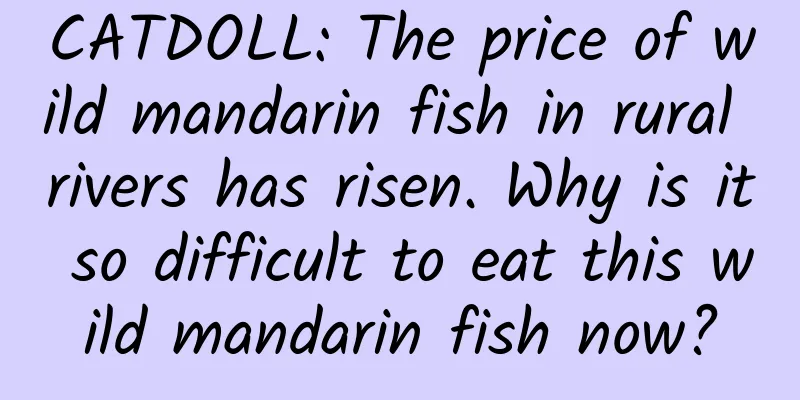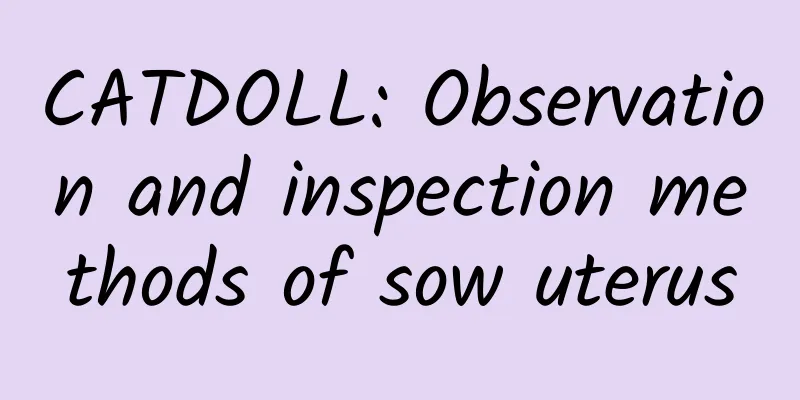CATDOLL : CATDOLL: Why is it necessary to fertilize crab ponds?

|
Question: Why do we need to fertilize the water in the early stage of river crab pond farming? What are the reasons why the water cannot be fertilized? How to solve it? Reply: Fertilizing water means fertilizing and cultivating single-cell algae in water. The main functions of fertilizing water in the early stage of river crab farming include: photosynthesis of algae can increase dissolved oxygen in water; algae can provide natural bait for snails; fertilizing water can reduce the transparency of water and prevent the proliferation of moss. In practice, the phenomenon of poor fertilizer and water effects often occurs. The reasons and solutions for the lack of fertilizer and water are as follows: 1. There are too many rotifers, cladocerans or protozoa: you can use avermectin or ivermectin products to kill them and then fertilize the water. 2. The water body lacks nutrients or is nutritionally unbalanced: Use "special fertilizer paste" with comprehensive and balanced nutrition to fertilize the water. 3. The temperature is low and the algae reproduce slowly: lower the water level appropriately in spring, and use "special effect fertilizer paste" in combination with "Algae Life" to fertilize the water. 4. The water is turbid and has low transparency: first use "Black Pioneer" to clarify the water, and then enrich the water. 5. There are too many snails, which filter and eat algae in large quantities, making it difficult to fertilize the water: release the snails in batches to avoid releasing too many at one time. There are too many green mosses, which absorb nutrients from the water: Use "Fiber Moss Quick Cleaner" to kill the green mosses and then fertilize the water There is no doubt that fertilizing water is very important in the process of river crab farming. Almost all friends who farm river crabs have used water fertilization products, hoping to adjust their water color to make river crabs grow better, or to sell the green shrimps raised in the trap at a good price. Especially when the overall price of river crabs was not high last year, the rising price of green shrimps made friends who have been fertilizing water make a lot of money. Some ponds have made a profit of more than 1,000 yuan just from green shrimps, and the highest price once reached 78-80 yuan per catty. There must be a lot of people raising green shrimps this year. How to fertilize the water and how to sell the green shrimps at a good price? The most important thing is how to increase the production and weight of river crabs. After years of experience and verification by many farmers, choose a suitable water fertilization product and stick to it, and a small investment will turn into a big return. There are some techniques for fertilizing water. If you master these techniques, you can not only save money, but also reduce pollution to the pond and let the pond provide nutrients for itself. Below I will share my years of experience with you, so that when we cannot control the market conditions, we can try to save costs and improve our breeding level. I believe that even if the market conditions are not good, there will still be people who make money. Fertilizer and water technique 1: Apply basic fertilizer Just like planting rice, you must use basic fertilizer once. Because we need to grow grass for river crab farming, relying solely on the nutrition of the bottom mud is not comprehensive, and it will cause the water grass to rely on the leaves to absorb nutrients, resulting in the crazy growth of the water grass, tender and green stems and leaves, and not resistant to high temperatures. When using basic fertilizers, you can choose some organic fertilizers and root lengthening fertilizers (methods, mainly used to grow grass roots and slowly provide some basic nutrients to the water body. Because there are a lot of nitrogen and phosphorus in our bottom mud, there is no need to add nitrogen and phosphorus fertilizers. You can add some potassium fertilizers appropriately to make the water grass grow thicker. Fertilizer and water technique 2: low temperature fertilizer and water The traditional aquaculture view is that water fertilizer is not needed during low temperatures. However, algae are the original producers in the water body, the foundation and the most important link of the aquatic food chain, and they are of great significance in determining the production performance of the water body. The photosynthesis of algae provides about 80% of the dissolved oxygen in the water body. If the number and function of algae are weakened, the results are: a. The pond environment deteriorates, the pond cannot circulate normally, and a large amount of ammonia nitrogen, nitrite, and hydrogen sulfide are produced, which brings great stimulation to aquatic animals; b. Insufficient dissolved oxygen and environmental deterioration lead to the occurrence of diseases; c. A large number of aquatic animals die. Therefore, low-temperature water fertilizer is of great significance: provide sufficient dissolved oxygen in the water body; promote normal circulation of the pond; provide suitable bait; reduce stress, reduce the incidence of diseases, and reduce deaths. In many years of aquaculture exploration, a certain proportion of water fertilizer products were used in the early stage, and the return rate can reach 1:3, and some are even higher. That is to say, if 100 yuan of fertilizer is invested per mu of land, an additional 300 yuan of income can be obtained. If the price of shrimp is high, the income will increase. We have done experiments, raising the same shrimps, some ponds are not fertile, and some ponds are fertile. The difference in shrimps alone is close to 800 yuan per mu, not to mention the difference in river crabs. In Changshu and Suzhou, many farmers raise river crabs for a profit, and the cost is recovered by shrimps, which reduces the risk of breeding. From the above data, we can see that choosing the right fertilizer and water products and using them to cultivate a certain amount of algae in the early stage of breeding will increase our income, thereby reducing our breeding risks. In view of the nutritional needs and algae reproduction characteristics at this time, we have repeatedly tested and finally launched a new generation of fertilizer and water products: Youpeptide Fertilizer and Water Paste meets the fertilizer and water needs in low temperature periods, and mainly cultivates some high-quality diatoms in low temperature periods. This product is biologically fermented and all dissolved in water to become nutrient salts absorbed by algae, overcoming the shortcomings of some products that cannot be fully dissolved and precipitated to the bottom, causing waste; and this product is fast-dissolving, so it can be guaranteed to be used in large quantities by algae in a short time, because the water level is not high in the early stage and the algae reproduction is not vigorous. If it is not fast-dissolving, some large molecular substances will not have time to be absorbed by algae and will also be wasted. Fertilizer and water technique three: strong algae Some people are very happy when the water color changes after using water fertilizer products. Then they just ignore it. Three days later, they suddenly find that the water is clear again, and they get angry and say that the product is not effective. In fact, this is not the product's fault, but the failure to master the habit of algae reproduction, and the failure to strengthen the algae in time to prolong the vitality of the algae. Because when the temperature is low, the algae reproduction rate will be slower, and the cell division rate will be slower. Sometimes the water color does not change after 3 days of using the product. In fact, it is not that algae have not been cultivated, but that the number of algae is not enough to cause the change of water color. At this time, adding some algae-strengthening products appropriately can prolong the vitality of the algae, let the algae continue to reproduce, and make the water color become what we want. As long as the algae pass this difficulty, it will become a dominant population, and it can cope with changes in temperature, changes in nutrition and other stresses. Therefore, it is necessary to strengthen the algae after three days of fertilization. The normal steps of fertilization are: use Algae Shengyuan, and use the algae-strengthening product (Beijian) three days later to double the health of the algae, and add fertilizer according to the growth of the algae after 10 days. The river crab farmers in Gaochun do a good job in this regard, that is, they often use fertilizer products. Some ponds spend up to 500 yuan per mu just for fertilizer. However, we do not recommend such a large investment. They know the benefits of fertilizer, but they do not master some methods, so there must be waste. Fertilizer and water technique 4: hanging fertilizer (microorganisms) Because the bottom mud contains nutrients for the growth of algae and aquatic plants, properly lifting out the nutrients in the bottom mud will reduce our investment and prevent the bottom of the water from deteriorating during the high temperature period. Fertilizer hanging at the right time will achieve better results. When the algae culture reaches a certain stage (the water color can be observed with the naked eye), a small amount of microorganisms are used at this time. After these microorganisms go down to the water body, they will quickly decompose the macromolecular substances in the water body, or go to the bottom to decompose the organic matter at the bottom. These organic matter will be decomposed into absorbable nutrients and absorbed and utilized by algae. This saves costs. Choose the right products and follow the above tips. I believe we can create more profits in the technical link of fertilization and watering. Some farmers may ask, my river crabs are almost finished, why do I still need to fertilize the water? There are mainly the following reasons. 01Balanced Nutrition The beneficial algae in the pond are also bait for river crabs. When we farmers feed the crabs, we like to feed them high-protein feed, which can easily lead to malnutrition and poor growth. Therefore, fertilizing the water is particularly important at this stage. Algae as bait can provide river crabs with nutrients such as amino acids, vitamins and proteins, enriching the nutrition of river crabs and making them bigger and fatter. 02 Take care of dissolved oxygen Farmers have all heard of the old saying "clear water crabs", which means that crabs can only be raised well if the water is clear and the water grass grows well. But I think that good crabs can only be raised if the water is rich, because the vitality of the current water grass is basically poor and the area of the water grass is very small after mowing, so the remaining dissolved oxygen needs to be provided by algae. I believe that many farmers know the importance of dissolved oxygen. Most of the diseases and deaths of river crabs are related to dissolved oxygen. It can be said that as long as the dissolved oxygen in the pond is guaranteed, there will be basically no crab deaths. So clear water crabs, rich water produces big crabs! 03Prevent harmful algae After the beginning of autumn, the water temperature of many ponds dropped, and the mosses lurking in many ponds slowly came out. On the one hand, the harm of moss will affect the crabs' eating habits. A lot of the feeds put by farmers will fall on the moss and the crabs can't eat them at all. Now is the molting period, and the moss may also hurt the crabs during the molting period. Moreover, once too much moss rots, it will consume the dissolved oxygen in the water and deteriorate the water quality. Not only moss and algae can also inhibit cyanobacteria, naked algae and dinoflagellates, we farmers can also find that ponds with moss rarely have outbreaks of cyanobacteria. Moss itself is also algae, so by the same token, fertilizing water can also inhibit the outbreak of cyanobacteria and other bad algae. Doubling the fertilizer for river crabs is indeed an important part. It is better for us farmers to supplement exogenous nutrients. Let me tell you about it below. Vitamins Beneficial algae can indeed supplement vitamins, but now our farmers are far from enough to rely on algae alone in order to seize the market early. It is recommended that farmers mix vitamins with feed. Vitamins are necessary elements to maintain life, and humans also need to supplement a lot of vitamins every day. Due to the structure of the human intestine, the digestion ability is strong, and general vitamins are made into ordinary particles. However, aquatic animals, such as crayfish, crabs, and white shrimp, have short intestines and poor absorption capacity, so the smaller the vitamin particles, the easier it is to absorb. The latest foreign technology is to make vitamins into nano-level particles, so that the absorption rate of aquatic animals is greatly improved. Secondly, nano-level vitamins are water-soluble, and the effect is much better whether they are mixed with feed or splashed with water. calcium We fertilize the water to provide a good environment for river crabs and help them molt smoothly. However, river crabs need to use a lot of calcium in the water to molt and form new shells. Once the calcium content in the water is insufficient, river crabs will fail to molt and form new shells, and soft-shell crabs will be formed. Therefore, we must not only do a good job of the external environment, but also ensure that the internal nutrition is in place. There are many varieties of calcium supplements. For example, ionic calcium, organic calcium and inorganic calcium. All kinds of calcium have good effects. However, if the above calcium is processed into water-soluble emulsified calcium, it will be easier to dissolve in water, which is beneficial for the absorption of aquatic animals such as crayfish, crabs and white shrimp. At the same time, it can also be used to mix feed, which has a better calcium supplement effect and quickly helps harden the shell. Only after processing can a large amount of nutrients be produced, so that the crabs in the river can grow better. River crabs are also called "crabs" and "hairy crabs". The head and chest are combined to form a square-shaped cephalothorax, which is hard in texture. There is a pair of eyes at the front of the body, and two pairs of very sharp crab teeth on the side. The front pair of appendages of the crab are called chelipeds, which are covered with fluff; there are 4 pairs of walking legs behind the chelipeds, which are flattened and long; the abdominal limbs have degenerated. The gender of river crabs can be distinguished from its abdomen: the abdomen of females is round, and the abdomen of males is triangular. The river crab is a large crustacean with 21 body segments. As the segments of the head and thorax are fused together, the whole body is divided into two parts: the cephalothorax and the abdomen. The back of an adult crab is black, and the cephalothorax is an average of 7cm long and 7.5cm wide. River crabs often burrow in muddy banks of rivers, lakes and swamps, are active at night, feed on fish, shrimp, dead animals and grains, and migrate to the estuaries of rivers to lay eggs every autumn. They hatch in March to May of the following year, grow into young crabs, and then swim upstream. Their meat is fresh and tender, and is a favorite food among people. The scientific name of river crab is Chinese mitten crab. It is a precious freshwater product with delicious taste, rich nutrition and high economic value. Chinese name Chinese mitten crab Aliases River crab, crab, hairy crab boundary Animalia Door Arthropoda Subphylum Crustacea Fertilized water is good feed for growing grass and cultivating good plankton. Good algae can detoxify and absorb harmful substances in the water, purify the water quality, and produce oxygen. It is a natural bait that shrimps and crabs like to eat. |
<<: CATDOLL: How to raise loaches and what preparations should be made before stocking them
>>: CATDOLL: After the operation, the incision has not healed yet. Can I eat fish?
Recommend
CATDOLL: A summary of the demotion of the Golden Cicada. There must be a cause and process.
1. Summary of Jin Chan's demotion. There must...
CATDOLL: Dilution method and procedure of Japanese encephalitis vaccine in pigs
What is porcine Japanese encephalitis vaccine? Po...
Teach you how to DIY baby safety fence
Choosing the right material To make your own fenc...
CATDOLL: Is it good to give the crab pond a fertilizer bath before the rain?
1. Is it good to fertilize the crab pond before t...
CATDOLL: How to improve the benefits of river crab farming
1. How to improve the benefits of river crab farm...
CATDOLL: Goldfish's life habits
In spring (March to May in the Gregorian calendar...
CATDOLL: What is the current price of common fish in your area? For example, black carp, grass carp, silver carp, carp, crucian carp, etc. Let us add some knowledge points to Baidu Knows.
1. What is the current price of common fish in yo...
CATDOLL: How to make delicious Cantonese mahuang chicken
The origin of Ephedra chicken Guangdong Mahuang C...
CATDOLL: Buying Guide for French Large White Sows: How to Choose the Best Sow?
French Large White Sow Selection Guide French Lar...
CATDOLL: What is the most profitable farming in rural areas?
What is the most profitable thing to raise in rur...
CATDOLL: Trees suitable for raising cicadas (Tree species suitable for raising cicadas)
1. What kind of tree should be used to raise cica...
CATDOLL: Disinfection methods in artificial insemination of pigs
Disinfection methods in artificial insemination o...
CATDOLL: How do goldfish reproduce and how often do they reproduce?
1. How do goldfish reproduce and how often do the...
CATDOLL: Why are there so many flies?
1. Why are there so many flies? In fact, as a mem...
CATDOLL: Can fly maggots be fed to pigs? Should they be dried and ground into powder or fed directly? What percentage of the pig's daily diet can they replace?
Can fly maggots be fed to pigs? Should they be dr...









